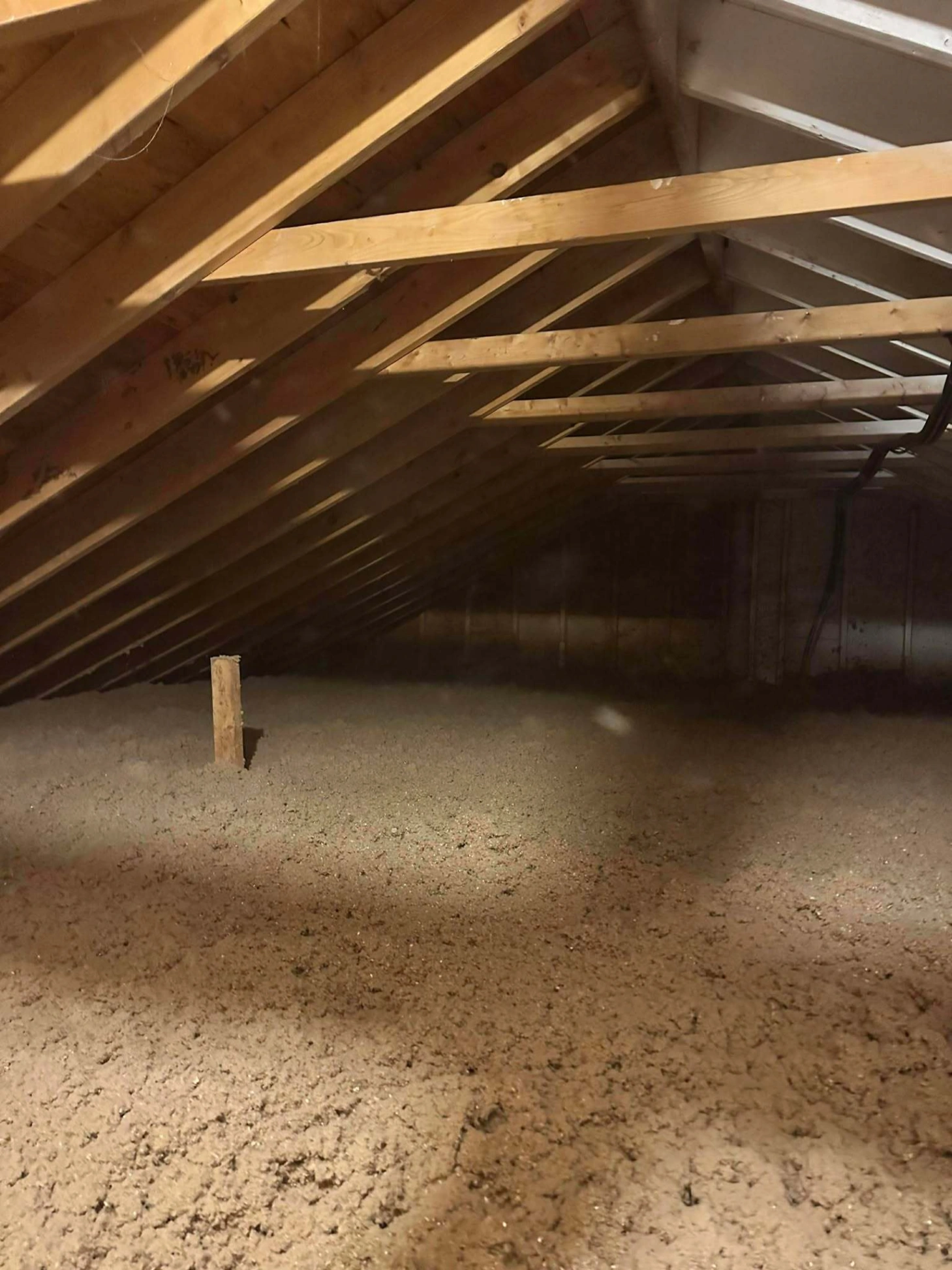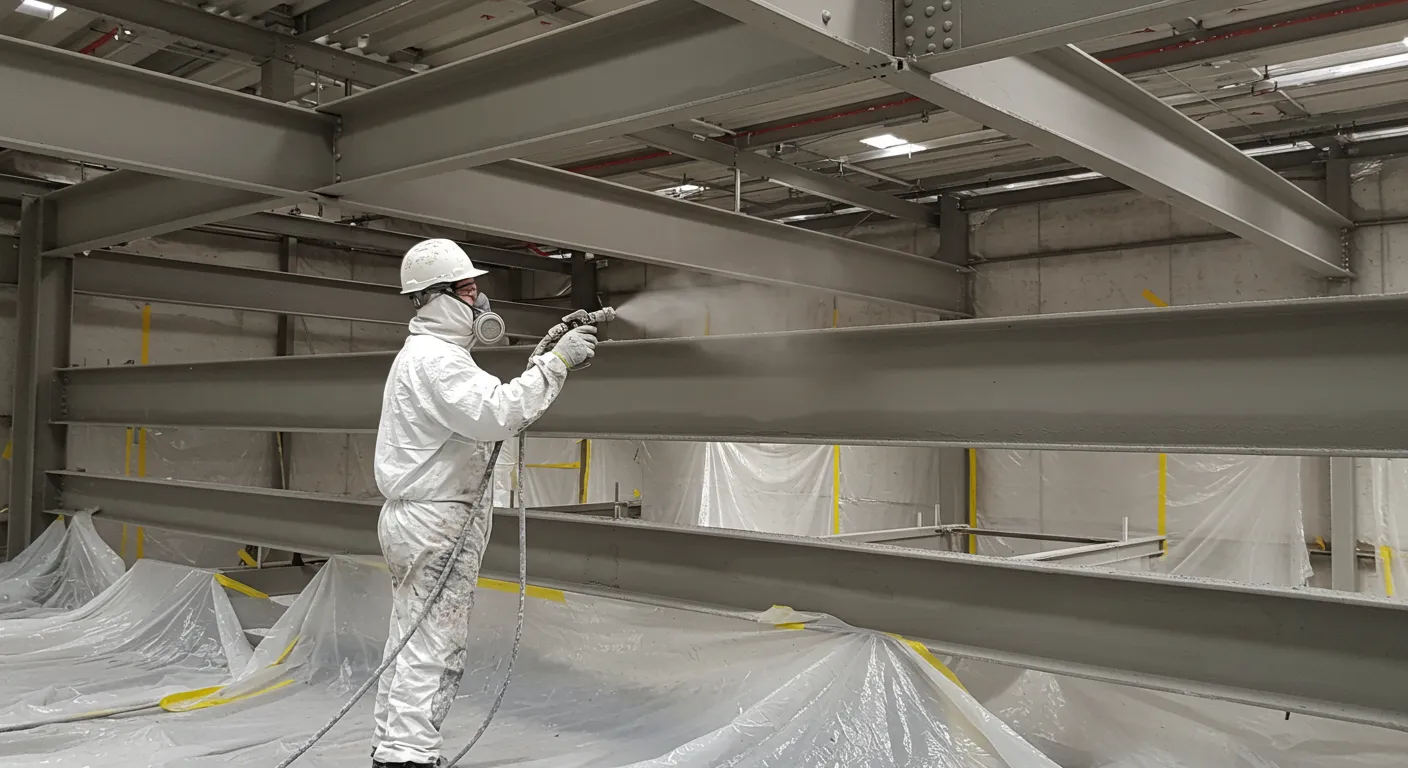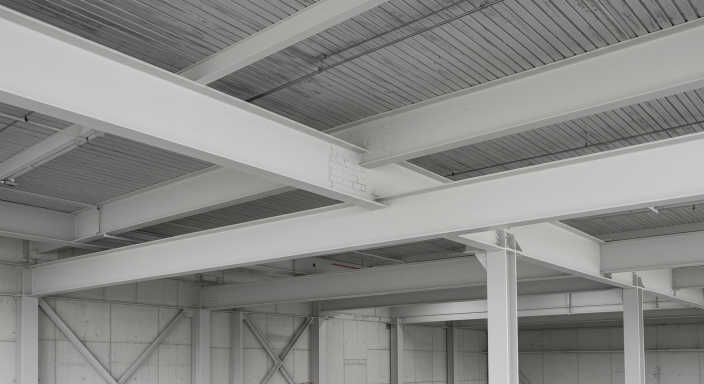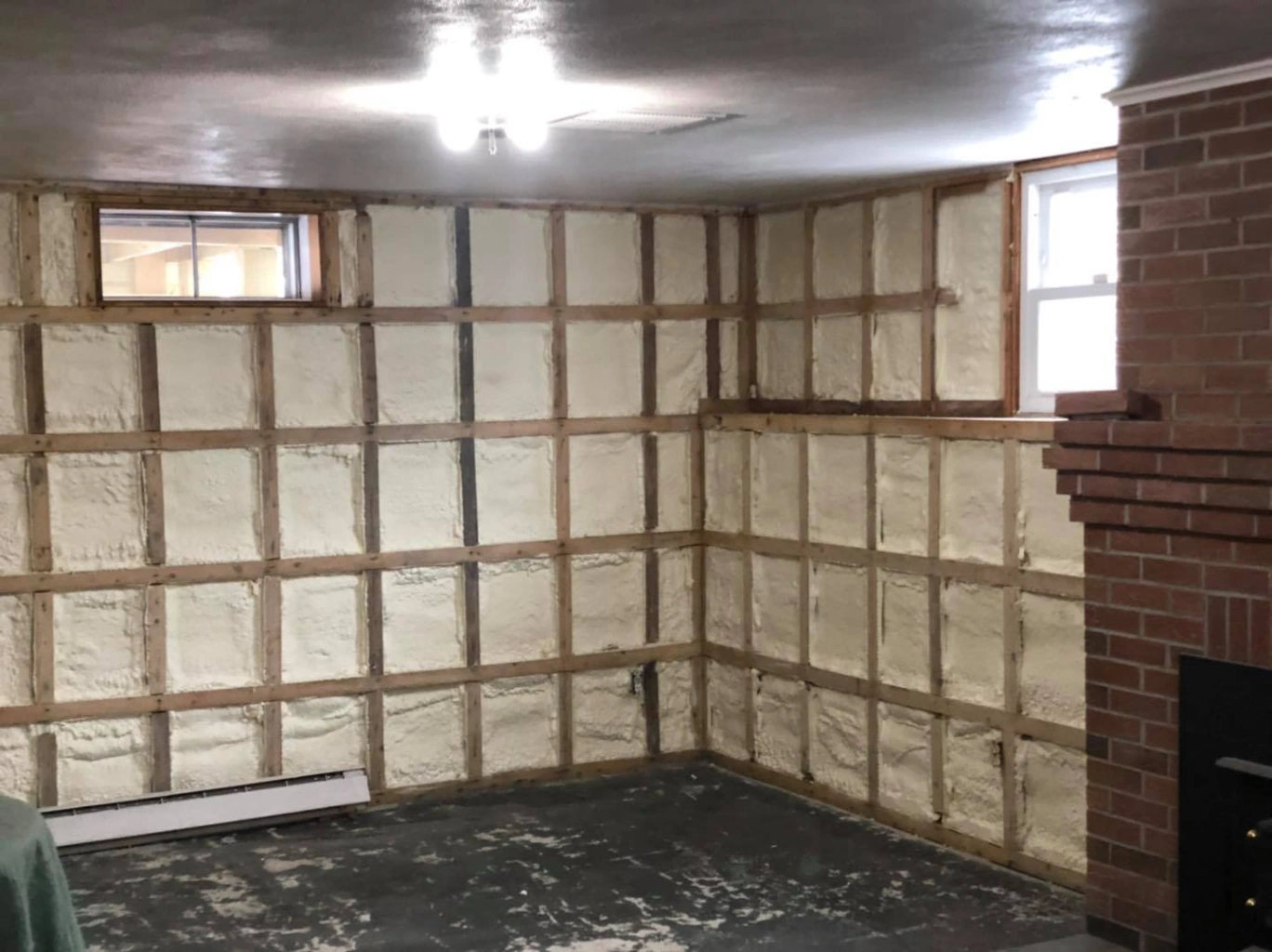

The optimal thickness of intumescent coating depends on the material being protected, the required fire-resistance rating, and the product’s tested performance characteristics. Standard application thicknesses range from 0.5 mm to over 5 mm (20 to 200 mils), with structural steel often requiring between 1.5 mm and 3.5 mm for 60- to 120-minute ratings. For non-structural assemblies or lower ratings, thicknesses under 1 mm may suffice.
Testing data from manufacturers and fire-resistance testing agencies such as UL and Intertek determine these requirements based on time-temperature curves and critical steel temperatures (usually 538°C/1000°F). Lamothe Insulation & Contracting applies intumescent coatings according to these specifications to ensure compliance with IBC and NFPA standards. This article explains the critical factors, specifications, and regional considerations behind coating thickness decisions.
| Fire Rating | Typical Coating Thickness | Application Surface | Common Product Types |
|---|---|---|---|
| 30 Minutes | 0.4 – 1.0 mm (16 – 40 mils) | Steel, Wood | Thin-film acrylic, Epoxy |
| 60 Minutes | 1.5 – 2.5 mm (60 – 100 mils) | Structural Steel | Solvent-based or water-based epoxy |
| 90 Minutes | 2.5 – 3.5 mm (100 – 140 mils) | Structural Steel | Intumescent hybrid systems |
| 120 Minutes | 3.5 – 5.0+ mm (140 – 200+ mils) | Steel, Concrete | Advanced epoxy systems |
Bonus Tip: Use a dry film thickness (DFT) gauge for accurate on-site measurement. Many coating failures trace back to improper film build.
Heavier or more complex steel members (e.g., wide flange beams, hollow columns) require thicker coatings due to slower heat dissipation.
Higher time ratings (60–120 min) significantly increase coating thickness. Thickness can more than double when upgrading from 60 to 120 minutes.
Cold weather or high humidity alters cure times and may affect final thickness during application. Application in winters, for example, often requires controlled environments or extended curing periods.
Thickness values must match the manufacturer’s certified fire-test data. These are validated by third-party listings (e.g., UL 263, ASTM E119).
Bonus Tip: Never approximate required thickness based on past jobs. Always consult current test data.

| Coating Type | Max Fire Rating | Typical DFT Range | Ideal Substrate | Drying Time (23°C, 50% RH) |
|---|---|---|---|---|
| Water-Based Acrylic | 1 Hour | 0.4 – 2.0 mm | Wood, Drywall | 4 – 6 hours |
| Solvent-Based Epoxy | 2 Hours | 1.0 – 5.0 mm | Steel | 6 – 12 hours |
| Intumescent Hybrids | 2+ Hours | 2.0 – 5.0+ mm | Steel, Concrete | 8 – 16 hours |
Market Fact: According to Grand View Research (2024), the global intumescent coatings market is expected to reach USD 1.3 billion by 2028, driven by increased demand in fire-rated infrastructure.
Bonus Tip: Coordinate with the project fire engineer during specification review to avoid rework later.
Coatings exceeding manufacturer specifications may crack or fail. Always apply within tested thickness limits.
Not for most systems. Multiple coats are often required to achieve thickness without sagging or cracking.
No. Adhesion, proper substrate prep, and dry film curing are equally important.
Use certified DFT gauges and inspect against job-specific benchmarks during application.
For fire-resistance solutions backed by certified application methods and technical knowledge, contact
Lamothe Insulation & Contracting
Phone: (508) 847-0119
Email: [email protected]
Service life can range from 10 to 25 years depending on exposure, maintenance, and type of coating used.
Only if the product is UV-resistant or top-coated for exterior use. Most indoor-use coatings will degrade under UV.
Most products have a shelf life of 12–24 months when stored under ideal conditions.
No. Use only approved primers listed by the coating manufacturer to avoid bonding failure.
No. Pigments added to topcoats for aesthetic reasons don’t alter the fire resistance of the base intumescent layer.


